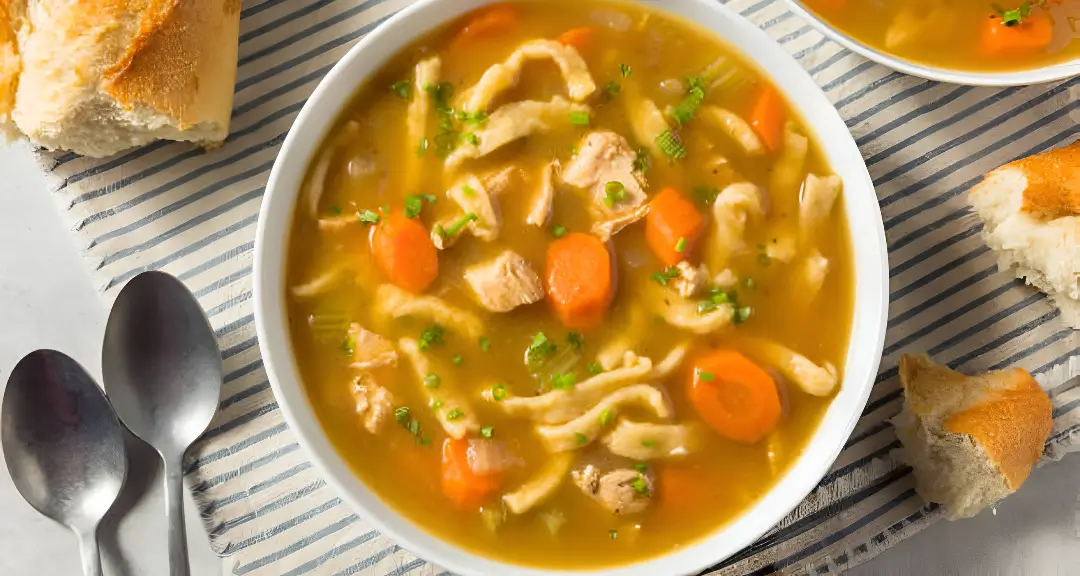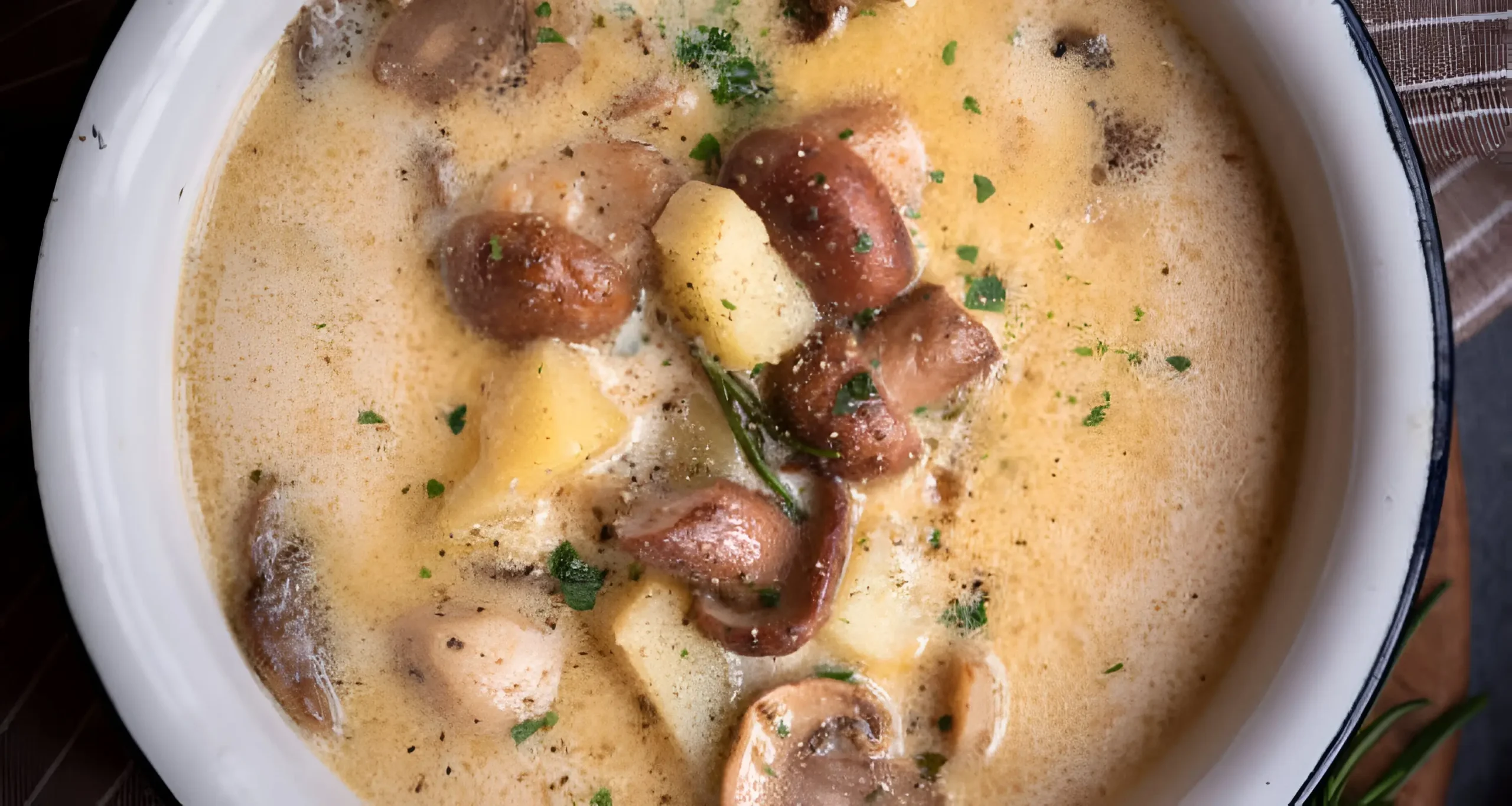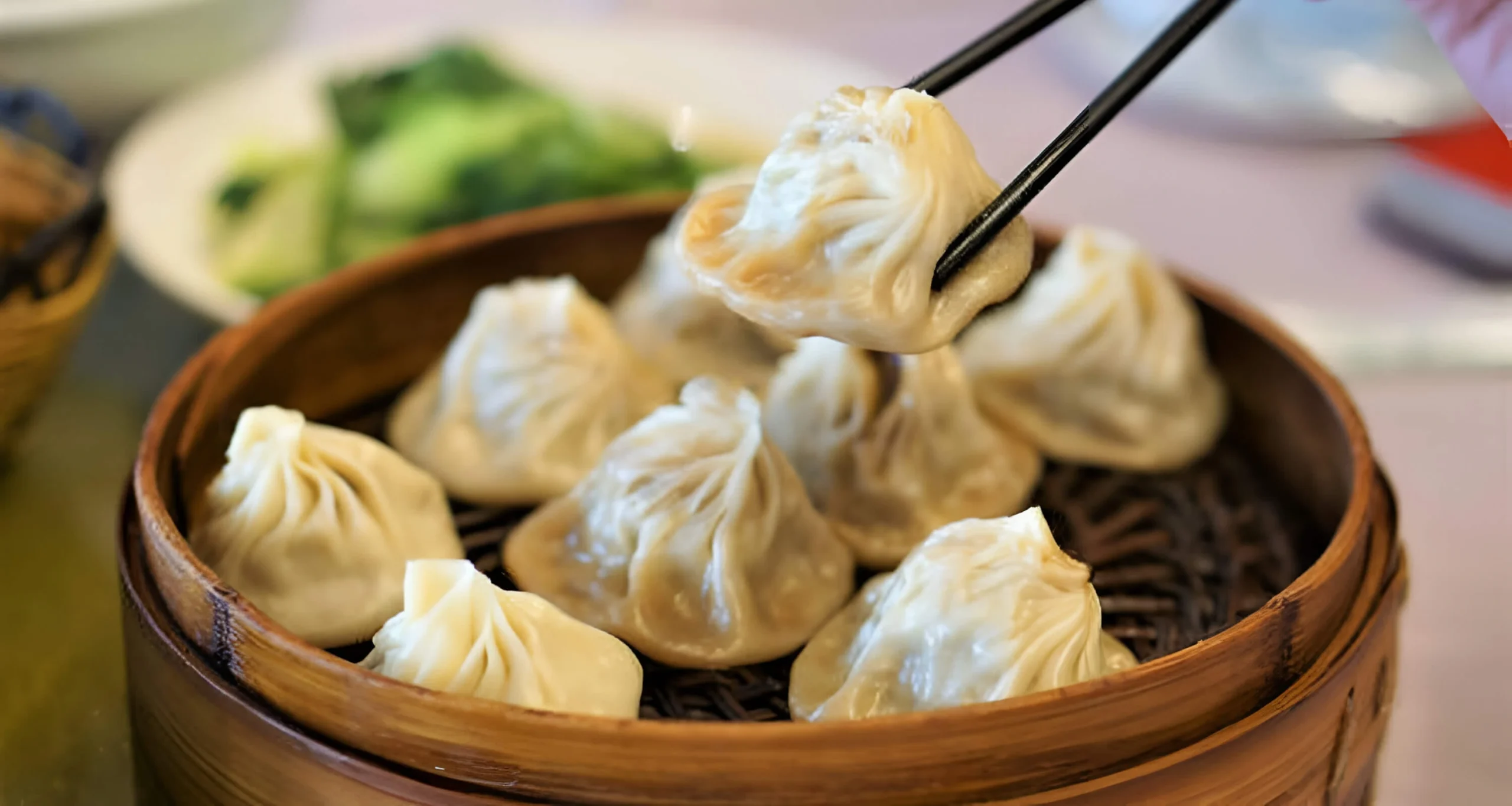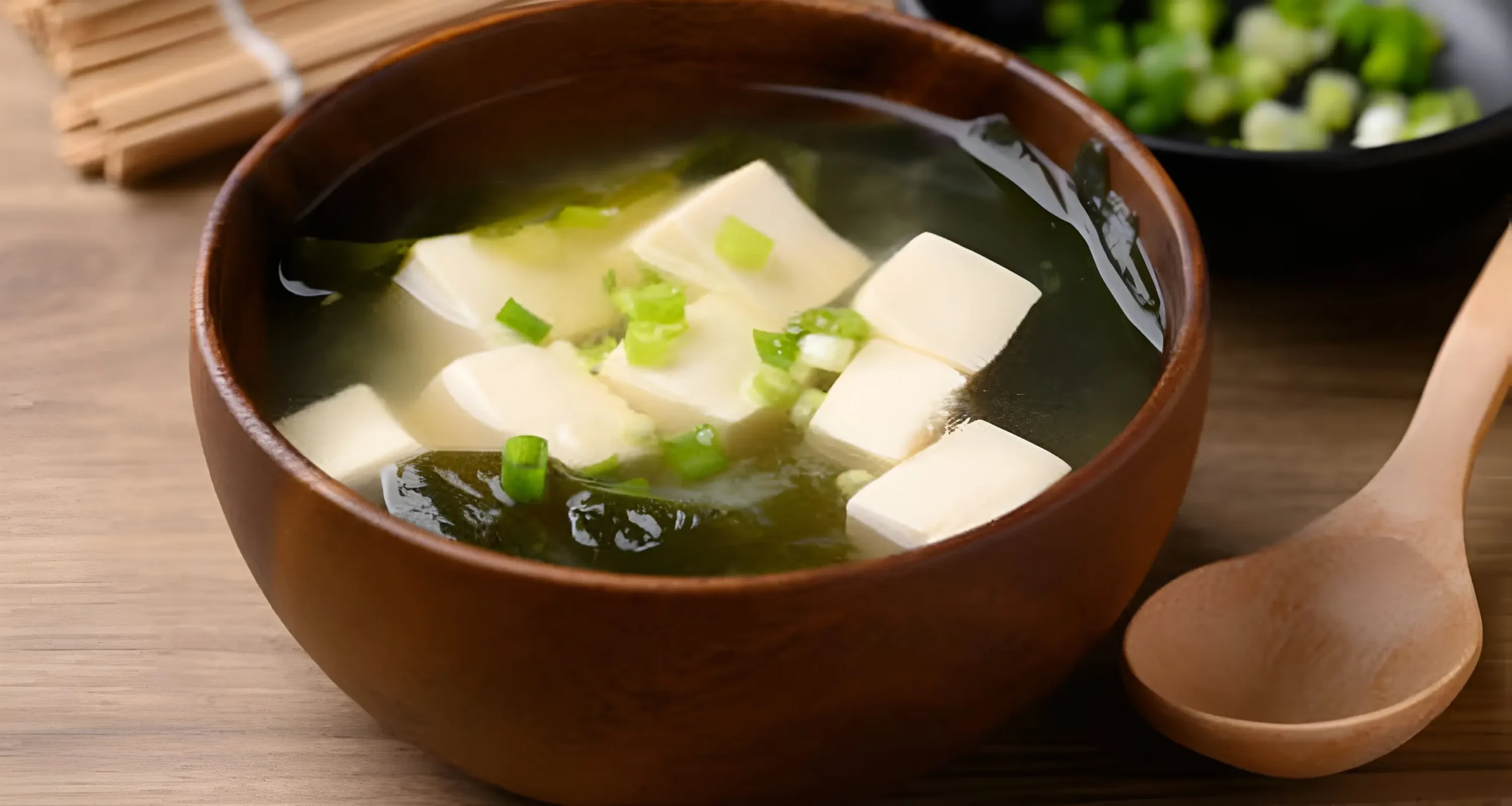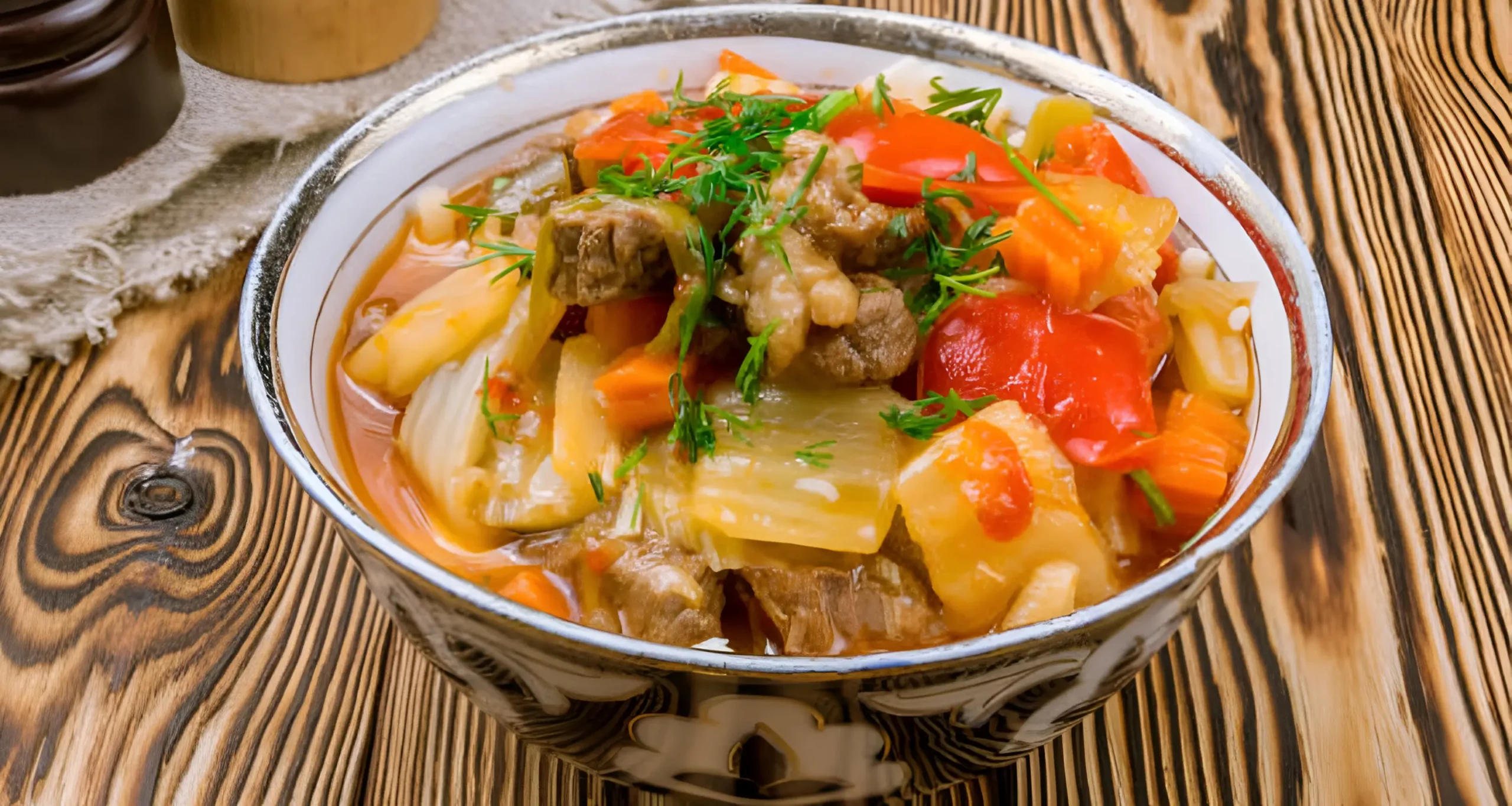Pea Soup Recipe 5 Healthy Twists You’ll Absolutely Love

Some of my warmest memories start with the stove’s gentle hum and a pot of split peas simmering. You might have a similar memory—a bowl that’s both filling and feels like home. This guide is for those who crave that cozy flavor but with healthier options for family and friends.
Split peas are a great choice—they’re packed with protein and fiber, and they’re easy on your wallet. They also offer nutrients like folate and vitamin A from carrots, along with a lot of fiber for steady energy. The best part? This soup is very forgiving, perfect for batch cooking and freezing.
In this article, you’ll learn about a classic base and healthy swaps. You’ll also discover a lower-fat ham and split Pea Soup Recipe, a lighter creamy version, a vegan option, and a slow cooker method. Plus, you’ll get tips on toppings, pairings, and how to store and portion the soup.
Prep time is about 10–20 minutes, and cooking takes 45–90 minutes, depending on your method. You’ll get 6–8 servings, perfect for family meals or freezing. Feel free to adjust the seasonings and sodium to suit your health goals and taste preferences.
💚 Pea Soup Recipe (Healthy & Delicious)
⏱ Time
- Prep: 10 minutes
- Cook: 25–30 minutes
🍽 Servings
- 4–6 bowls
🧾 Ingredients
- 2 cups green split peas, rinsed
- 1 tbsp olive oil
- 1 medium onion, diced
- 2 carrots, diced
- 2 celery stalks, diced
- 2 cloves garlic, minced
- 4 cups vegetable or chicken broth (low sodium)
- 1 tsp dried thyme
- Salt and pepper to taste
- Optional garnish: fresh parsley, a drizzle of olive oil
👩🍳 Instructions
1️⃣ Sauté Aromatics
Heat olive oil in a large pot. Sauté onion, carrots, and celery for 3–4 minutes until soft. Add garlic and cook 30 seconds.
2️⃣ Add Peas & Broth
Stir in split peas, broth, and thyme. Bring to a gentle boil.
3️⃣ Simmer
Reduce heat and simmer 20–25 minutes until peas are tender. Stir occasionally to prevent sticking.
4️⃣ Blend (Optional)
Use an immersion blender to partially or fully blend the soup for a creamy texture.
5️⃣ Season & Serve
Adjust salt and pepper to taste. Garnish with fresh parsley or a drizzle of olive oil. Serve hot.
🌿 5 Healthy Twists to Love
- Add leafy greens – spinach, kale, or Swiss chard boost fiber and vitamins.
- Use vegetable broth – keeps it lighter and vegan-friendly.
- Include fresh herbs – parsley, thyme, or dill add antioxidants and flavor.
- Swap cream for coconut milk – adds creaminess without saturated fat.
- Add a pinch of turmeric or cumin – boosts anti-inflammatory benefits and flavor.
🔄 Optional Enhancements
- Add diced potatoes or parsnips for extra body
- Stir in lemon juice at the end for brightness
- Top with roasted chickpeas for crunch and protein
Key Takeaways
- Pea Soup Recipe is a nutritious, budget-friendly base high in fiber and plant protein.
- The best split pea soup recipe can be adapted to lower sodium and higher fiber easily.
- Ham and split Pea Soup Recipe can be made lower in fat by choosing lean ham or turkey ham.
- Creamy split Pea Soup Recipe can be lightened with pureed vegetables or dairy-free options.
- Vegan split Pea Soup Recipe offers hearty plant proteins and umami-rich swaps for depth.
- Slow cooker split Pea Soup Recipe is perfect for hands-off meal prep and batch cooking.
Pea Soup Recipe: Classic Base and Healthy Swaps
You can make a delicious Pea Soup Recipe with just a few ingredients. Start with dried green or yellow split peas, low-sodium broth, and some veggies. Use onion, celery, carrots, garlic, bay leaf, thyme, and black pepper. For a hearty soup, combine 1–2 cups of split peas with 6–8 cups of liquid.
Finish it off with a bit of apple cider vinegar or lemon juice. This will enhance the flavors.
Ingredients for a nutritious classic Pea Soup Recipe
Choose low-sodium broth to keep the soup healthy. Add mirepoix—onion, celery, carrots—and garlic for extra flavor. Be sure to include a bay leaf and a few sprigs of thyme.
For a bit of brightness, have lemon ready. This mix makes a balanced and tasty Pea Soup Recipe.
Simple swaps to reduce sodium and increase fiber
To cut down on sodium, use homemade broth or low-sodium stock. Rinse canned items and avoid processed meats. Replace pork hocks with smoked turkey or lean ham to reduce sodium.
Add veggies like leeks, parsnip, or sweet potato for more fiber and nutrients. Try barley or farro for extra fiber and texture. Use herbs and spices like cumin, smoked paprika, and black pepper for flavor without sodium.
Tips for achieving a creamy texture without heavy cream
Pureeing part or all of your soup makes it creamy without adding heavy cream. Use an immersion blender or process in batches to achieve a smooth consistency.
Pureed cauliflower, potato, or carrot add creaminess. For a tangy touch, add a bit of plain Greek yogurt after heating. You can also use blended silken tofu or light canned coconut milk for a creamy soup without heavy cream.
Wholesome Ham and Split Pea Soup Recipe Twist
This version of ham and split pea soup preserves the classic comfort while reducing excess fat. The traditional Pea Soup Recipe gains depth from ham or a ham bone, which gives smoky richness. You can keep that character and reduce calories by choosing lean cuts and smart finishers.
Choosing lean ham or turkey ham for lower fat
Pick a trimmed ham shank, center-cut ham, or smoked turkey leg to reduce fat in ham and split Pea Soup Recipe. For most Pea Soup Recipe yields, swap in 1 cup diced lean ham or one smoked turkey leg instead of fattier cuts. Center-cut hams from brands like Smithfield or a deli-sliced low-sodium ham work well when you want less saturated fat but the same smoky tone.
Balancing smoky flavor with fresh herbs and vegetables
Add extra carrots, celery, and diced onion to boost fiber and mellow salt. Fresh parsley or thyme stirred in near the end brightens the broth. A splash of apple cider vinegar or fresh lemon juice at serving time lifts the richness and sharpens the flavors in the best split pea soup recipe.
If you use a ham bone, simmer it to extract flavor, remove the bone, then shred any meat back into the pot. Skim surface fat with a spoon while cooking. Chill leftovers overnight and lift congealed fat from the top to further reduce fat in ham and split Pea Soup Recipe.
How to make leftovers safe and flavorful
Cool soup within two hours and store in shallow airtight containers in the refrigerator for up to 3–4 days. Warm gently over low heat to preserve the peas’ texture. If the soup thickens, add a cup of hot broth or water to reach the right consistency.
For extended storage, freeze in portions for up to 3 months. Thaw in the refrigerator overnight and reheat slowly, then taste and adjust seasoning. A quick stir-in of fresh chopped herbs or a squeeze of lemon will revive the aroma when serving leftover bowls from your best split pea soup recipe.
Creamy Split Pea Soup Recipe made Lighter and Healthier
You can enjoy a silky bowl of split Pea Soup Recipe without heavy cream. Start by cooking split peas with onions, celery, garlic, and carrots until they are very soft. Then, reserve a cup of the cooked solids and puree the rest until it’s velvety. This method makes a thick, creamy soup without adding too many calories or saturated fat.
Using pureed vegetables to replace cream
Pureed vegetables add body and sweetness, just like cream. Use cauliflower, potato, parsnip, carrot, or rutabaga cooked until tender. Blend cooked vegetables with your split peas in a 1:1 ratio to get the right texture. If it’s too thick, thin it with cooking liquid or low-sodium vegetable broth.
Dairy-free options for a creamy finish
For a dairy-free creamy Pea Soup Recipe, blend silken tofu for protein and smoothness. Use unsweetened light coconut milk sparingly to avoid a coconut taste. Stir in unsweetened soy or oat creamers at the end of cooking. For nonfat Greek yogurt, temper it by mixing a small amount of hot soup into the yogurt first. Then, stir it off the heat to avoid curdling.
Garnish ideas that add texture without extra calories
Choose garnishes that give crunch and brightness with minimal calories. Toasted pumpkin seeds or sunflower seeds add satisfying texture; keep portions to about a tablespoon per serving. Finely chopped chives or green onion bring a fresh bite. A teaspoon of extra-virgin olive oil adds mouthfeel without much volume. Finish with smoked paprika, microgreens, or lemon zest for aromatic lift.
| Technique | What it adds | Best for |
|---|---|---|
| Vegetable puree (cauliflower, potato) | Natural creaminess, fiber, mild flavor | Anyone wanting the best split pea soup recipe without dairy |
| Silken tofu blend | Protein, silky texture, neutral taste | Those seeking a dairy-free creamy Pea Soup Recipe with extra protein |
| Light coconut milk (small amount) | Richer mouthfeel, slight sweetness | Cooks who want a creamy split Pea Soup Recipe with a touch of richness |
| Tempered Greek yogurt | Tang, creaminess with lower fat | People who tolerate dairy and want a lighter alternative |
| Low-calorie garnishes (seeds, herbs, citrus) | Crunch, freshness, aromatic lift | Anyone finishing a Pea Soup Recipe without adding many calories |
Vegan Split Pea Soup: Plant-Based Comfort
You’re looking for a warm, filling bowl that’s good for a plant-based diet. This Pea Soup Recipe uses protein-rich alternatives instead of ham. It keeps the savory taste and makes it easy to prepare for busy weeks. Here are some tips to make the best split pea soup recipe that stays fresh even after freezing.
Protein-rich substitutes for ham
Smoked tempeh adds chew and protein, just like ham. Crumbled baked tofu is mild and firm, seasoned with soy sauce or tamari. Roasted chickpeas add crunch and extra protein for texture.
Sautéed mushrooms give a meaty feel and boost plant protein. Remember, split peas already have a lot of protein. Incorporating tempeh or tofu makes the meal more nutritious and satisfying.
Umami boosters to replicate savory depth
White miso or light miso stirred in at the end adds umami and keeps probiotics. Low-sodium tamari or soy sauce deepens flavor without being too strong. Nutritional yeast adds a cheesy, nutty taste that goes well with split peas.
Sundried tomatoes and roasted mushrooms add concentrated savory flavors. For smoky depth, add a pinch of liquid smoke or smoked paprika carefully.
Meal-prep and freezing tips for busy plant-based eaters
Cook big batches and freeze them in airtight containers for up to three months. If freezing, cook split peas a bit less because they’ll soften more when reheated. Label containers with the date and how to reheat.
Thaw overnight in the fridge or reheat from frozen slowly with extra broth or water. Gently stir while reheating, then taste and adjust the seasoning as needed. Add fresh herbs or a squeeze of lemon to brighten the flavors before serving.
Slow Cooker Split Pea Soup for Hands-Off Cooking
Just set your slow cooker and forget about the stove. This makes a classic Pea Soup Recipe into a simple weeknight meal. The low heat blends flavors while you do other things.
Start with dried split peas along with chopped onion, carrots, and celery. Add herbs and broth at the start for deep flavors. If you have a smoked ham hock or bone, add it now for smoky taste. For lean ham cubes, add them later to keep the meat tender.
Cook on low for 6–8 hours or high for 3–4 hours until peas are soft. Slow cooker split pea soup recipe needs less stirring than stovetop versions. Near the end, mash a few peas for creamier soup if you prefer.
Start with a bit less liquid than a stovetop Pea Soup Recipe—about 10–15% less. If it’s too thick, add hot broth slowly until it’s right. Don’t add table salt until the end to avoid too much sodium.
Slow cookers offer deep flavors and ease, while Instant Pots make soup fast, in 30–45 minutes. Choose based on your schedule: slow cooker for depth or Instant Pot for speed.
The Instant Pot lets you control texture with quick or natural pressure release. Take care not to exceed the maximum liquid level when cooking peas or beans. Pick the method that suits your needs: slow cooker for depth or Instant Pot for speed.
High-Flavor, Low-Calorie Add-Ins and Toppings

Enhance your Pea Soup Recipe with smart, low-calorie choices. These ingredients enhance flavor while keeping calories low. Small changes like fresh herbs, bright acid, and crunchy garnishes can make a simple bowl feel complete. These ideas work well for both classic ham and split pea soup recipe and lighter creamy versions.
Herbs and spices that elevate pea soup recipe without salt
Start with aromatic herbs that release flavor without sodium. Include a bay leaf during simmering and discard it before serving. Stir in fresh parsley or dill near the end for brightness. Use chives for a mild onion note.
Try thyme for warmth and a touch of rosemary very sparingly to avoid bitterness. For depth, sprinkle smoked paprika or a pinch of ground cumin. A small dash of mustard powder complements split peas well. Finish with freshly cracked black pepper and a little lemon zest or a splash of apple cider vinegar to sharpen flavors.
Healthy crunchy toppings and optional fats
Keep crunch low-calorie with thin radish slices or finely diced celery. Toasted seeds add texture and a nutty hit; limit to one tablespoon to control calories. A single teaspoon of extra-virgin olive oil gives mouthfeel without overwhelming the bowl.
For creaminess, use one tablespoon of plain Greek yogurt or one teaspoon of tahini as a garnish. These small portions add richness to a creamy split pea soup while keeping the dish light. Use measured amounts so you enjoy indulgence without excess.
How to portion and serve for calorie control
Portioning helps maintain balanced meals. Serve 1 to 1.5 cups when the soup is the main dish, providing roughly 250–350 calories for lighter versions with the suggested toppings. For a starter or side, offer 1-cup servings.
Use a measuring cup or a ladle with known volume to be consistent. Pair your soup with a large mixed salad or steamed vegetables to add volume with minimal calories. These low-calorie sides help you feel satisfied while maintaining portion control.
| Garnish | Suggested Portion | Flavor Impact | Estimated Calories |
|---|---|---|---|
| Parsley or dill (chopped) | 1 tbsp | Fresh, bright | 1–2 kcal |
| Radish slices | 6–8 slices | Crunchy, peppery | 3–5 kcal |
| Toasted pumpkin or sunflower seeds | 1 tbsp | Nutty texture | 45–60 kcal |
| Plain Greek yogurt | 1 tbsp | Cool, creamy | 10–15 kcal |
| Extra-virgin olive oil | 1 tsp | Silky finish | 40 kcal |
| Smoked paprika or cumin | Pinch (1/8 tsp) | Smoky or warm spice | Negligible |
| Lemon zest or apple cider vinegar | 1 tsp | Brightens flavor | 0–1 kcal |
Pairings and Sides to Complete Your Meal
Choose sides that balance the texture and flavor of your Pea Soup Recipe. A bright salad or crunchy slaw refreshes the palate. The right bread and beverage make the meal feel finished and inviting.
Light bread options and whole-grain pairings
For a hearty, wholesome match try whole-grain sourdough or a slice of crusty whole-wheat baguette with your bowl. Light corn or whole-grain rolls work well when you want soft bread that won’t overpower the soup.
If you need lower calories, reach for whole-grain crispbreads or oven-toasted thin slices brushed lightly with olive oil spray. These options maintain the spotlight on the soup while adding a satisfying crunch.
Simple salads and vegetable sides that complement pea soup recipe
Pair the soup with a lemon vinaigrette salad built from arugula, spinach, or mixed greens. The acid cuts through richness and brightens each spoonful.
Roasted Brussels sprouts, steamed green beans, or a cucumber and tomato salad add color and texture. Try an apple-fennel slaw or a radish salad for extra crunch and fresh contrast.
Wine and beverage suggestions for hosting
When you host, choose drinks that refresh the palate. A crisp Sauvignon Blanc or an unoaked Chardonnay complements the herbaceous, slightly sweet notes of a best split pea soup recipe. These whites lift flavors without weighing them down.
For nonalcoholic options offer sparkling water with citrus, unsweetened iced tea, or a light apple cider served cold or warmed for seasonal comfort. If your version includes ham or smoked ingredients, pick beverages that cut fat and refresh the mouth between bites for the best wine pairing pea soup recipe experience.
Cooking Tips, Troubleshooting, and Storage

Keep this guide handy as you make your Pea Soup Recipe. Small adjustments can save a pot that looks or tastes off. Use these cooking tips split pea soup to rescue texture, boost flavor, and store your soup safely.
Fixing texture issues: too thick or too thin
If your soup is too thick, stir in hot broth, water, or a splash of milk or plain yogurt while reheating. You can also ladle a bit into a blender and return it to the pot for a silkier mouthfeel.
When the soup runs thin, simmer it uncovered to reduce liquid. A quick thickener is instant mashed potato flakes or a slurry made from pureed cooked vegetables. If peas remain grainy because they are undercooked, simmer longer until soft or use an immersion blender to smooth the base.
Flavor troubleshooting: bland, bitter, or too salty
For a dull batch, brighten the flavors with a squeeze of lemon juice or a dash of vinegar, followed by a pinch of salt. If the aroma feels weak, gently sauté a little minced onion and garlic in olive oil and swirl it into the soup.
If bitterness appears, counter it with a teaspoon of honey or a grated carrot and taste again. For oversalted soup, dilute with unsalted broth or water and simmer with a peeled raw potato for 10–15 minutes; remove the potato before serving.
Safe storage, reheating, and freezing guidelines
Cool your soup to room temperature within two hours, then refrigerate in shallow, airtight containers. Follow storage for pea soup guidance and use within 3–4 days for best quality and safety.
Freeze meal-sized portions for up to three months. Thaw overnight in the refrigerator or reheat from frozen, adding a little liquid as it warms. Reheat gently over medium-low heat, stirring to prevent sticking and adjusting seasoning at the end.
How to fix pea soup boils down to simple moves: adjust liquids for texture, tweak acids or sweetness for balance, and cool and store properly for later meals. These cooking tips split pea soup and storage for pea soup will help you keep every batch tasting its best.
Conclusion
You’ve seen five healthy twists on a classic Pea Soup Recipe. These keep comfort while cutting calories and boosting nutrition. Start with a nutritious base and make simple swaps to lower sodium and add fiber.
Try a lean ham or smoked turkey version for smoky depth with less fat. Or, make the best split pea soup recipe lighter by using pureed vegetables or dairy-free finishes for creaminess.
If you follow a plant-based plan, the vegan split pea soup option is perfect. It gives you protein-rich substitutes and umami boosters so you won’t miss the meat. For busy weeks, use a slow cooker split pea soup or Instant Pot method to layer flavors and save time.
Each technique makes meal prep and freezing straightforward. This way, you can eat well all week.
Experiment with the swaps, toppings, and pairings suggested in this guide. Adapt seasoning to your dietary needs. Small changes—like low-sodium broth, extra vegetables, or a plant-based protein—can transform a bowl into the best split pea soup recipe for your table.
Bookmark this guide, try one twist per week, and share your results with friends or family. This weekend, make a batch, adjust it to your taste, and enjoy a nutritious, comforting bowl that fits your lifestyle.
FAQ
What makes split pea soup a healthy meal base?
Split pea soup is packed with plant protein and fiber from dried peas. It’s cost-effective and simple to prepare in large quantities. Adding veggies like carrots boosts vitamins and minerals.Using low-sodium broth and extra veggies keeps it healthy. Herbs add flavor without extra salt or calories.
How long does pea soup take to make and how many servings will it yield?
Prep time is 10–20 minutes, and cooking takes 45–90 minutes. A recipe makes 6–8 servings. Slow cooker or Instant Pot times vary, so plan ahead.
How can you reduce sodium and boost fiber in a classic pea soup?
Choose low-sodium broth or make your own. Rinse canned items and skip bouillon. Add more veggies and whole grains for fiber.Season with herbs and a splash of vinegar or lemon instead of salt.
How do you get a creamy texture without heavy cream?
Puree part or all of the soup for creaminess. Use pureed veggies or Greek yogurt off the heat. For dairy-free, blend silken tofu or light coconut milk.
Can you make a ham and split pea soup that’s lower in fat?
Yes, use lean ham or a ham shank without excess fat. Include 1 cup of diced lean ham or a smoked turkey leg. Simmer, remove the bone, and shred the meat back in.Skim fat or refrigerate overnight to remove excess fat.
How can you best revive leftover ham and split pea soup?
Cool leftovers within two hours and refrigerate in shallow containers. Reheat gently and add hot broth if too thick. For frozen portions, thaw overnight and adjust seasoning after reheating.Finish with fresh parsley, lemon, or apple cider vinegar to revive flavor.
How can you make a vegan split pea soup that’s savory and satisfying?
Build umami with miso, tamari, nutritional yeast, or roasted mushrooms. Add protein with smoked tempeh, tofu, or chickpeas. Use liquid smoke or smoked paprika for smokiness.
Any special tips for meal-prepping and freezing vegan or regular split pea soup?
Make large batches and freeze in portion-sized containers for up to 3 months. If freezing, slightly undercook split peas. Label with date and reheating notes.Thaw overnight in the fridge or reheat from frozen with added liquid. Adjust seasoning and add fresh herbs before serving.
How should you layer ingredients and time additions in a slow cooker?
Add the split peas, vegetables, herbs, and most of the broth right at the beginning. Use a ham bone for extra flavor. Add lean ham cubes in the last hour.Cook on low for 6–8 hours or high for 3–4 hours until peas are tender.
Do slow cooker and Instant Pot methods require different liquid amounts or seasoning approaches?
Yes, slow cookers evaporate less, so start with slightly less liquid. Add hot broth if too thick. Delay adding salt until the end.The Instant Pot cooks faster and preserves aromatics. Reduce liquid per your multicooker manual and be mindful of foaming when cooking peas.
What quick fixes work if your pea soup is too thick, too thin, or too salty?
If too thick, add hot broth or water. If too thin, simmer uncovered or blend part of it. A slurry of pureed veggies or instant mashed potato flakes can thicken quickly.If too salty, dilute with unsalted broth or water. Simmer with a peeled raw potato to soak up excess salt, then discard the potato.
Which herbs, spices, and toppings boost flavor without adding many calories?
Use bay leaf, thyme, parsley, chives, dill, smoked paprika, cumin, mustard powder, and black pepper. Finish with vinegar or lemon juice. For crunch, add radish slices or toasted seeds.For richness, a teaspoon of olive oil or a tablespoon of Greek yogurt per serving keeps calories modest.
What are good sides and beverages to serve with pea soup?
Serve alongside whole-grain sourdough or a slice of crusty whole-wheat baguette. Complement with a bright salad or roasted vegetables. For drinks, choose a crisp white wine or nonalcoholic options like sparkling water with citrus.
How should you store and reheat pea soup safely?
Cool soup to room temperature within two hours, then refrigerate in shallow airtight containers. Store in freezer-safe, meal-sized portions for up to three months. Thaw overnight in the fridge or reheat from frozen with added liquid.Reheat gently over medium-low heat, stirring to prevent sticking. Adjust seasoning after reheating. Discard if left at room temperature more than two hours or if it smells off.
Add a Dash of Your Thoughts!
There are no reviews yet. Be the first one to write one.

